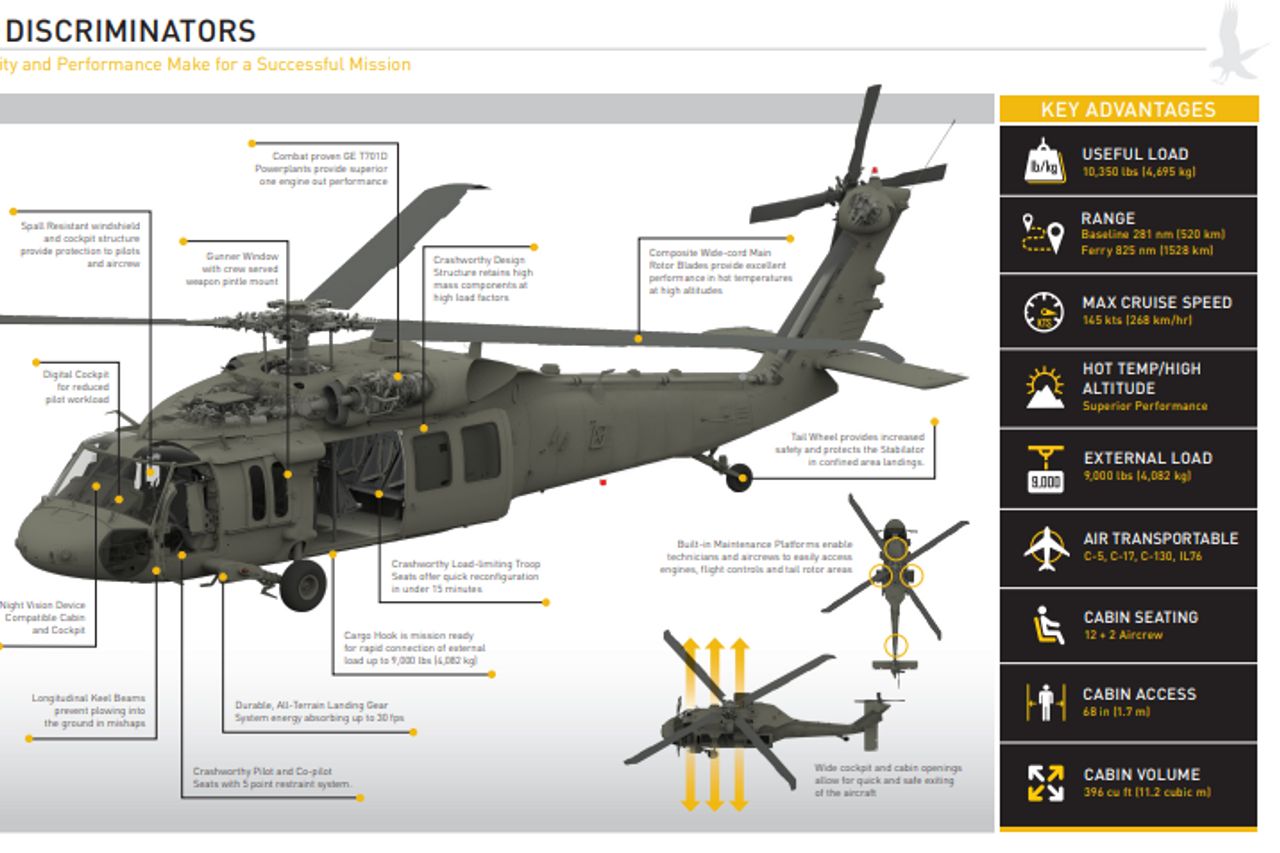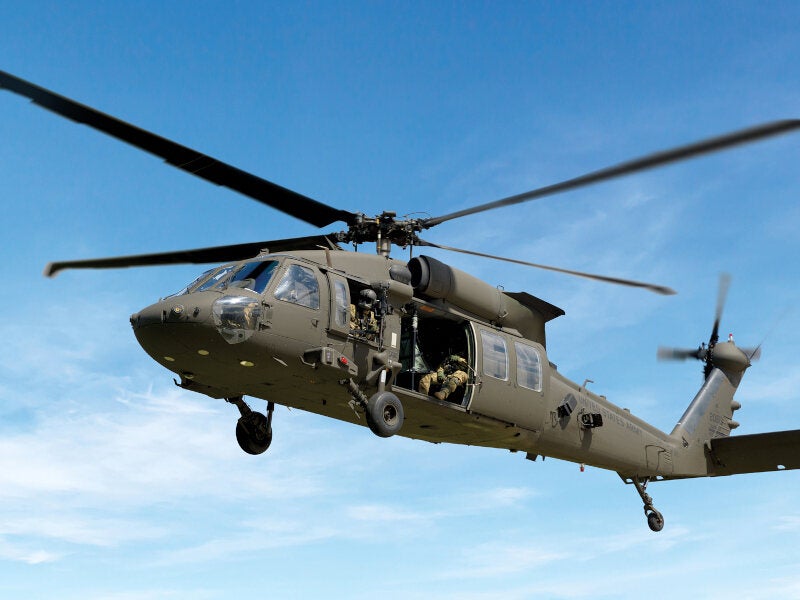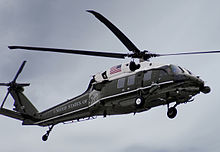A Look at the Sikorsky S 70's Function in Military and Civil Aviation
A Look at the Sikorsky S 70's Function in Military and Civil Aviation
Blog Article
High-Performance Multi-Role Rotorcraft Featuring Advanced Cabin Technologies and Integrated Sensing Unit Solutions
The world of rotorcraft technology has seen noteworthy developments in recent times, specifically in the realm of high-performance multi-role rotorcraft geared up with sophisticated cockpit technologies and effortlessly incorporated sensor systems. These advancements have not just augmented the operational capabilities of rotorcraft yet have actually also dramatically influenced contemporary aviation operations on numerous fronts. From enhanced goal versatility to enhanced functional efficiency, the merging of innovative cabin modern technologies and integrated sensing unit systems has actually ushered in a new era of possibilities for rotorcraft applications. In the following conversation, we will certainly discover the advancement of rotorcraft technology, explore the realm of advanced cabin innovations, and take a look at the effects of incorporated sensor systems on the functional convenience and effectiveness of modern-day rotorcraft.
Evolution of Rotorcraft Innovation
The development of rotorcraft technology has actually been noted by considerable innovations in aerodynamics, products, and propulsion systems, forming the abilities and efficiency of contemporary rotorcraft. In addition, innovations in propulsion systems, consisting of much more powerful engines and ingenious propulsion modern technologies, have actually allowed rotorcraft to accomplish higher elevations, faster rates, and better payloads.
These improvements have not only changed the capabilities of rotorcraft but have likewise broadened their applications across numerous industries, including army, business, and emergency situation services. The continual development of rotorcraft technology remains to drive technology in the field, pressing the borders of what is feasible and forming the future of vertical flight.
Advanced Cockpit Innovations
Structure upon the foundational advancements in the rules of aerodynamics, materials, and propulsion systems, the world of rotorcraft innovation currently changes emphasis towards introducing Advanced Cockpit Innovations. The assimilation of cutting-edge modern technologies within the cockpit setting plays a vital function in enhancing the functional abilities, safety, and performance of contemporary rotorcraft. sikorsky s 70. Advanced Cabin Innovations incorporate a broad variety of features created to offer pilots with enhanced situational understanding, streamlined data administration, and user-friendly control interfaces
Among the crucial developments in cockpit design is the execution of glass cockpits, which change traditional analog assesses with high-resolution screens. These electronic systems use adjustable designs, real-time data integration, and enhanced readability, enabling pilots to access vital information at a glimpse. In addition, progressed avionics systems, such as fly-by-wire controls and increased fact screens, are transforming how pilots communicate with the aircraft, enabling exact control and boosted decision-making capacities.


Incorporating sophisticated cockpit developments not just boosts pilot performance however additionally contributes to general mission performance and safety in intricate functional atmospheres. By leveraging state-of-the-art modern technologies within the cockpit, rotorcraft suppliers are setting new requirements for operational excellence and objective success.
Integrated Sensor Equipments
With the evolution of rotorcraft innovation, the combination of sophisticated Integrated Sensing unit Equipment has come to be paramount in boosting operational efficiency and safety. These Integrated Sensor Solutions incorporate a broad array of technologies that offer essential data for numerous features such as navigation, security, targeting, and environmental tracking. By flawlessly integrating sensing units like radars, cameras, lidar, and infrared systems into rotorcraft, operators can take advantage of improved situational understanding, improved mission capacities, and reduced pilot workload.
One trick advantage of Integrated Sensor Solutions is their capacity to collect real-time data and supply workable insights to pilots and goal operators. Advanced radar systems can find and track targets over long ranges, permitting for very early risk discovery and efficient reaction planning. Furthermore, incorporating infrared and electro-optical electronic cameras allows rotorcraft to carry out reconnaissance and monitoring goals with precision and precision.
Essentially, the assimilation of cutting-edge sensing unit innovations into rotorcraft not only improves operational performance however likewise contributes significantly to total goal success and crew security. As rotorcraft continue to advance, the duty of Integrated Sensing unit Systems will certainly remain at the center of development in the aerospace industry.
Operational Versatility and Performance
Enhancing functional versatility and efficiency in rotorcraft is a natural progression from the combination of sophisticated Integrated Sensing unit Systems. By leveraging the data and insights supplied by these advanced sensor systems, rotorcraft can enhance their performance across numerous objectives and atmospheres.
Operational adaptability includes the capacity of rotorcraft to adjust to various duties and scenarios effectively. With sophisticated cabin innovations and incorporated sensing unit systems, rotorcraft can flawlessly transition in between tasks such as search and rescue, medical evacuation, surveillance, and extra. This versatility enhances the rotorcraft's capability to fulfill varied functional requirements without calling for considerable reconfiguration.
Effectiveness in rotorcraft procedures is vital for making best use of objective efficiency and resource application. Integrated sensing unit systems play a crucial function in boosting functional effectiveness by giving real-time data on climate condition, surface mapping, target tracking, and more. This data makes it possible for pilots click this link to make educated choices quickly, enhance flight courses, save gas, and improve general goal performance.
Influence On Modern Air Travel Workflow

Furthermore, the integration of sophisticated sensing units helps with boosted mission preparation and execution, making it possible for rotorcraft to do a large range of tasks with enhanced accuracy. From search and rescue procedures to aerial firefighting and police goals, the capabilities of modern rotorcraft outfitted with advanced cabin innovations and incorporated sensor systems are unequaled.
Additionally, the effect of these advancements prolongs beyond functional effectiveness to cost-effectiveness and sustainability. By maximizing trip paths, gas usage, and maintenance routines, high-performance rotorcraft furnished with sophisticated cabin modern technologies and sensors add to minimizing operational costs and ecological impact, making them crucial assets in contemporary aviation procedures.
Verdict
To conclude, the high-performance multi-role rotorcraft look at here with advanced cabin modern technologies and integrated sensor systems stands for a significant evolution in aviation modern technology. These advancements enhance operational versatility and efficiency, ultimately influencing contemporary aeronautics operations in a positive means. The combination of these innovative innovations permits improved capabilities and performance in various goal circumstances, showcasing the proceeded advancement of rotorcraft innovation in the air travel industry.
The world of rotorcraft innovation has actually seen remarkable advancements in recent times, especially in the world of high-performance multi-role rotorcraft furnished with sophisticated cabin modern technologies and seamlessly incorporated sensor systems. From enhanced objective flexibility to enhanced functional performance, the merging of innovative cabin technologies and incorporated sensor systems has ushered in a new era of opportunities for rotorcraft applications. In the adhering to conversation, we will check out the evolution of rotorcraft innovation, dive right into the realm of sophisticated cockpit developments, and check out the implications of incorporated sensing unit systems on the functional versatility and performance of modern rotorcraft.

Report this page